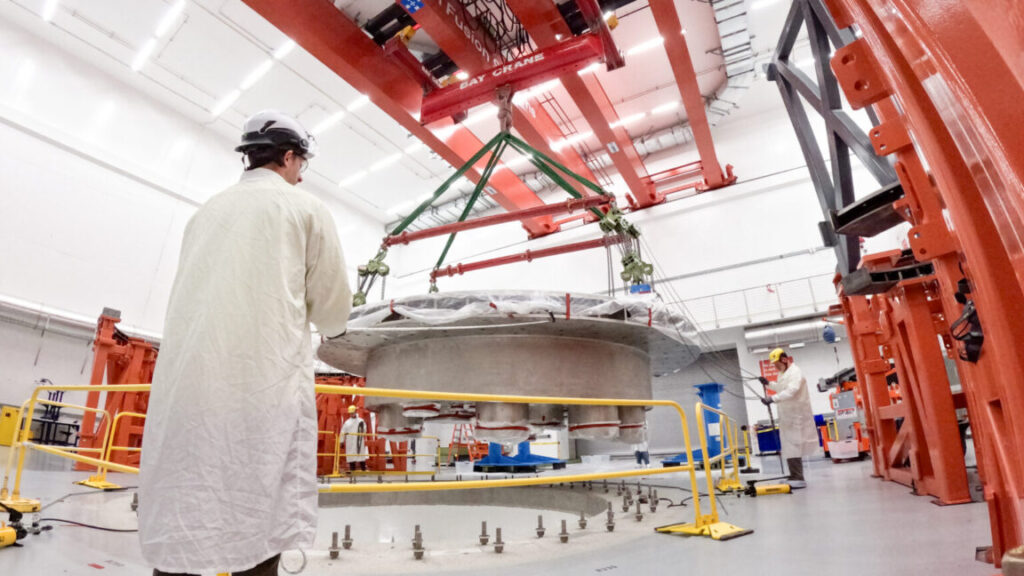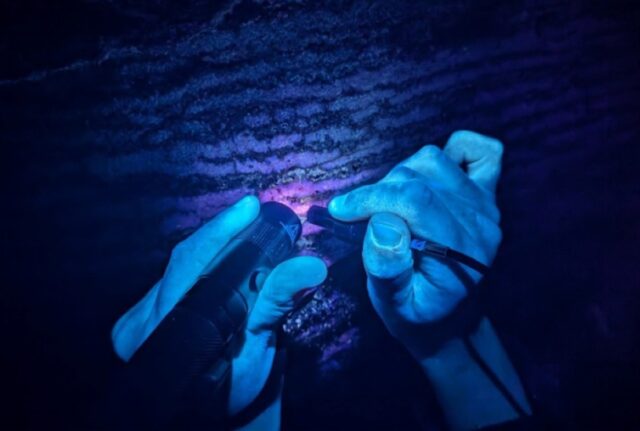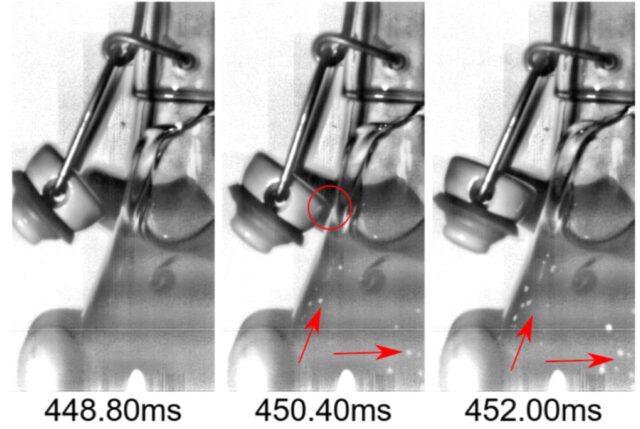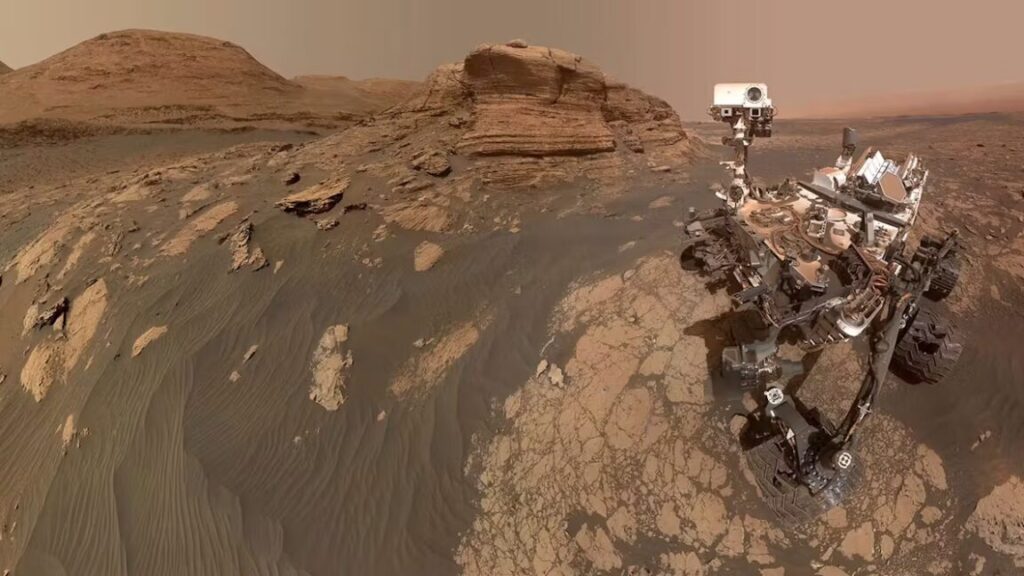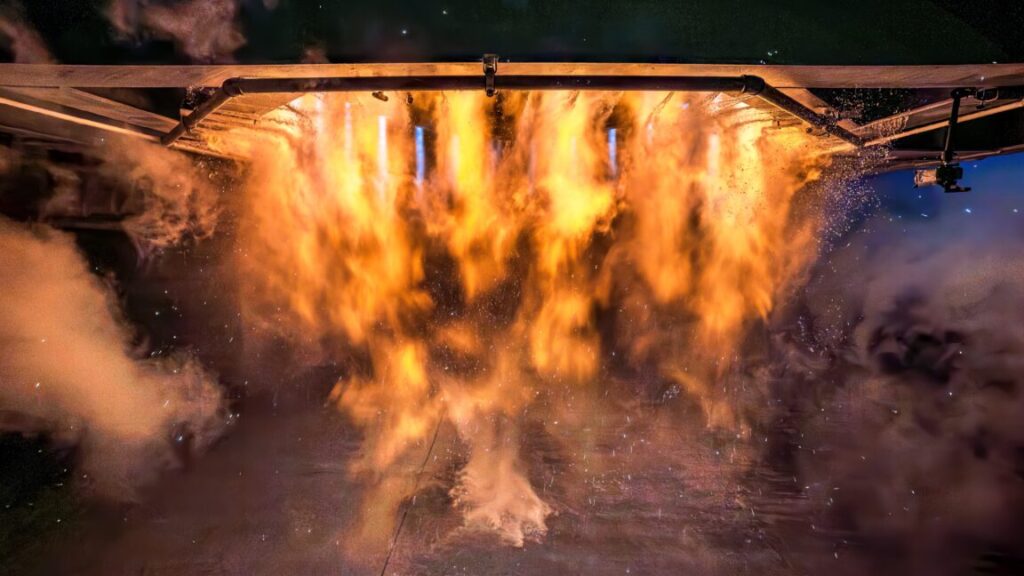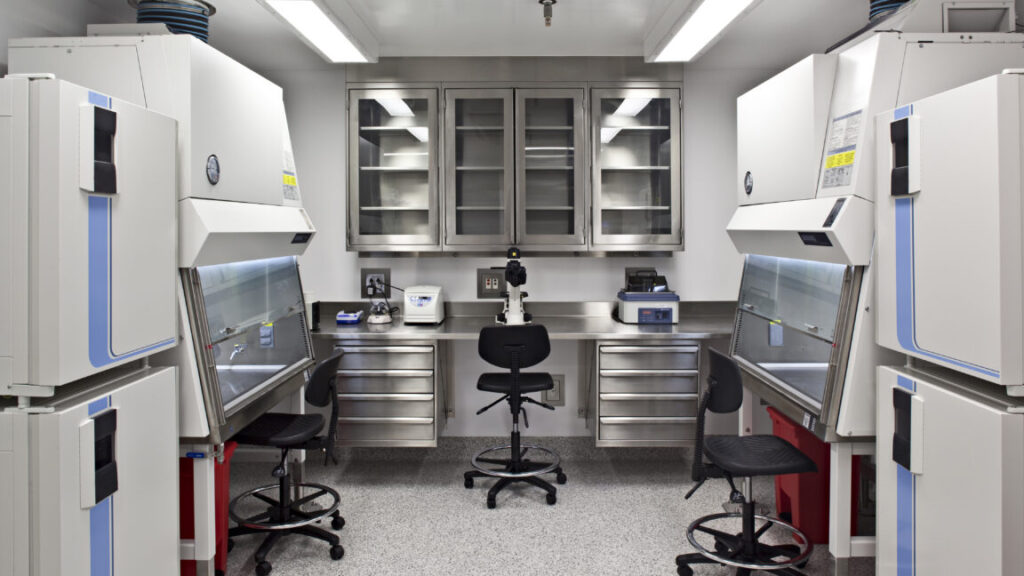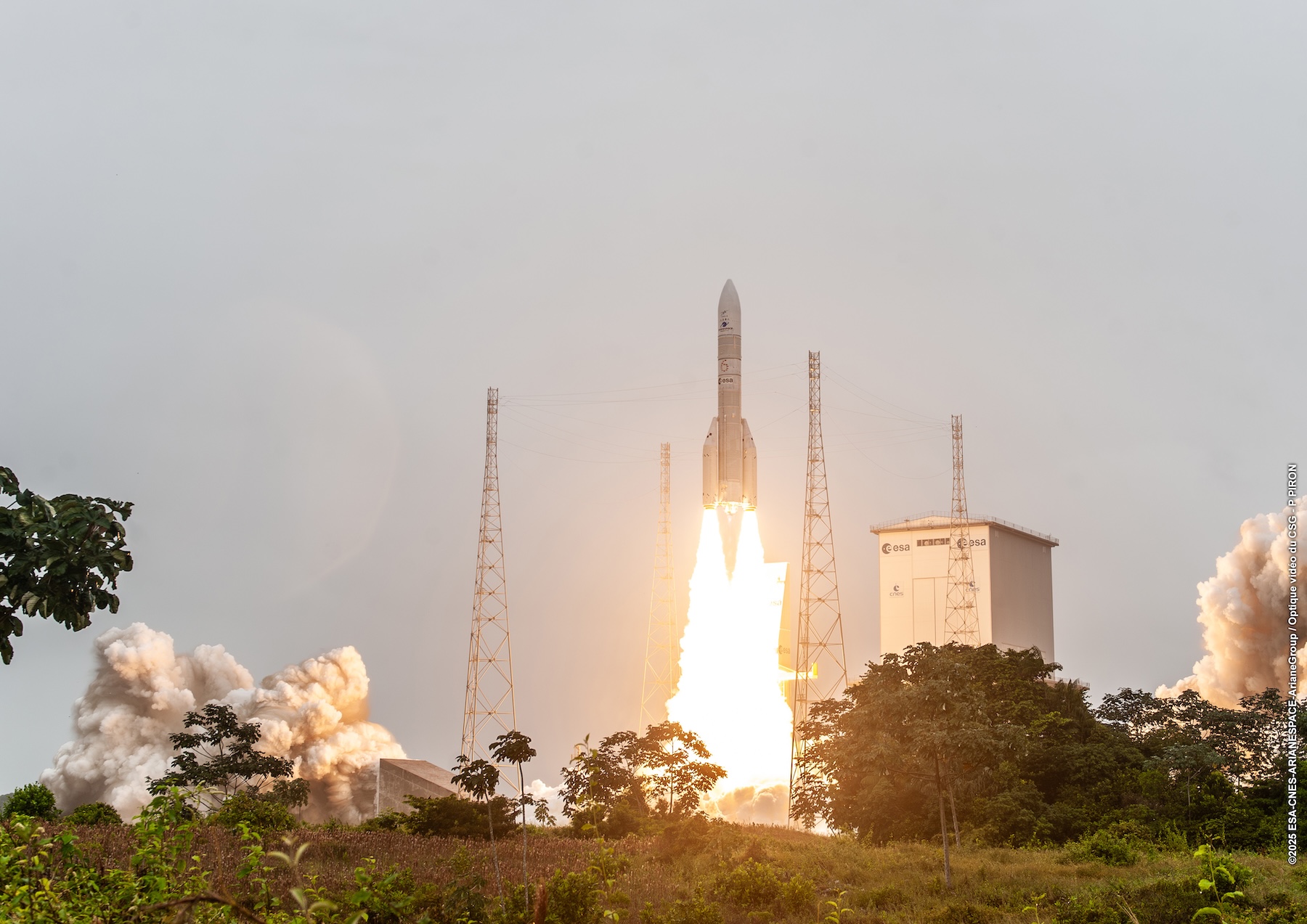First tokamak component installed in a commercial fusion plant
A tokamak moves forward as two companies advance plans for stellarators.
There are a remarkable number of commercial fusion power startups, considering that it’s a technology that’s built a reputation for being perpetually beyond the horizon. Many of them focus on radically new technologies for heating and compressing plasmas, or fusing unusual combinations of isotopes. These technologies are often difficult to evaluate—they can clearly generate hot plasmas, but it’s tough to determine whether they can get hot enough, often enough to produce usable amounts of power.
On the other end of the spectrum are a handful of companies that are trying to commercialize designs that have been extensively studied in the academic world. And there have been some interesting signs of progress here. Recently, Commonwealth Fusion, which is building a demonstration tokamak in Massachussets, started construction of the cooling system that will keep its magnets superconducting. And two companies that are hoping to build a stellarator did some important validation of their concepts.
Doing donuts
A tokamak is a donut-shaped fusion chamber that relies on intense magnetic fields to compress and control the plasma within it. A number of tokamaks have been built over the years, but the big one that is expected to produce more energy than required to run it, ITER, has faced many delays and now isn’t expected to achieve its potential until the 2040s. Back in 2015, however, some physicists calculated that high-temperature superconductors would allow ITER-style performance in a far smaller and easier-to-build package. That idea was commercialized as Commonwealth Fusion.
The company is currently trying to build an ITER equivalent: a tokamak that can achieve fusion but isn’t large enough and lacks some critical hardware needed to generate electricity from that reaction. The planned facility, SPARC, is already in progress, with most of the supporting facility in place and superconducting magnets being constructed. But in late March, the company took a major step by installing the first component of the tokamak itself, the cryostat base, which will support the hardware that keeps its magnets cool.
Alex Creely, Commonwealth Fusion’s tokamak operations director and SPARC’s chief engineer, told Ars that the cryostat’s materials have to be chosen to be capable of handling temperatures in the area of 20 Kelvin, and be able to tolerate neutron exposure. Fortunately, stainless steel is still up to the task. It will also be part of a structure that has to handle an extreme temperature gradient. Creely said that it only takes about 30 centimeters to go from the hundreds of millions of degrees C of the plasma down to about 1,000° C, after which it becomes relatively simple to reach cryostat temperatures.
He said that construction is expected to wrap up about a year from now, after which there will be about a year of commissioning the hardware, with fusion experiments planned for 2027. And, while ITER may be facing ongoing delays, Creely said that it was critical for keeping Commonwealth on a tight schedule. Not only is most of the physics of SPARC the same as that of ITER, but some of the hardware will be as well. “We’ve learned a lot from their supply chain development,” Creely said. “So some of the same vendors that are supplying components for the ITER tokamak, we are also working with those same vendors, which has been great.”
Great in the sense that Commonwealth is now on track to see plasma well in advance of ITER. “Seeing all of this go from a bunch of sketches or boxes on slides—clip art effectively—to real metal and concrete that’s all coming together,” Creely said. “You’re transitioning from building the facility, building the plant around the tokamak to actually starting to build the tokamak itself. That is an awesome milestone.”
Seeing stars?
The plasma inside a tokamak is dynamic, meaning that it requires a lot of magnetic intervention to keep it stable, and fusion comes in pulses. There’s an alternative approach called a stellarator, which produces an extremely complex magnetic field that can support a simpler, stable plasma and steady fusion. As implemented by the Wendelstein 7-X stellarator in Germany, this meant a series of complex-shaped magnets manufactured with extremely low tolerance for deviation. But a couple of companies have decided they’re up for the challenge.
One of those, Type One Energy, has basically reached the stage that launched Commonwealth Fusion: It has made a detailed case for the physics underlying its stellarator design. In this instance, the case may even be considerably more detailed: six peer-reviewed articles in the Journal of Plasma Physics. The papers detail the structural design, the behavior of the plasma within it, handling of the helium produced by fusion, generation of tritium from the neutrons produced, and obtaining heat from the whole thing.
The company is partnering with Oak Ridge National Lab and the Tennessee Valley Authority to build a demonstration reactor on the site of a former fossil fuel power plant. (It’s also cooperating with Commonwealth on magnet development.) As with the SPARC tokamak, this will be a mix of technology demonstration and learning experience, rather than a functioning power plant.
Another company that’s pursuing a stellarator design is called Thea Energy. Brian Berzin, its CEO, told Ars that the company’s focus is on simplifying the geometry of the magnets needed for a stellarator and is using software to get them to produce an equivalent magnetic field. “The complexity of this device has always been really, really limiting,” he said, referring to the stellarator. “That’s what we’re really focused on: How can you make simpler hardware? Our way of allowing for simpler hardware is using really, really complicated software, which is something that has taken over the world.”
He said that the simplicity of the hardware will be helpful for an operational power plant, since it allows them to build multiple identical segments as spares, so things can be swapped out and replaced when maintenance is needed.
Like Commonwealth Fusion, Thea Energy is using high-temperature superconductors to build its magnets, with a flat array of smaller magnets substituting for the three-dimensional magnets used at Wendelstein. “We are able to really precisely recreate those magnetic fields required for accelerator, but without any wiggly, complicated, precise, expensive, costly, time-consuming hardware,” Berzin said. And the company recently released a preprint of some testing with the magnet array.
Thea is also planning on building a test stellarator. In its case, however, it’s going to be using deuterium-deuterium fusion, which is much less efficient than deuterium-tritium that will be needed for a power plant. But Berzin said that the design will incorporate a layer of lithium that will form tritium when bombarded by neutrons from the stellarator. If things go according to plan, the reactor will validate Thea’s design and be a fuel source for the rest of the industry.
Of course, nobody will operate a fusion power plant until sometime in the next decade—probably about at the same time that we might expect some of the first small modular fission plants to be built. Given the vast expansion in renewable production that is in progress, it’s difficult to predict what the energy market will look like at that point. So, these test reactors will be built in a very uncertain environment. But that uncertainty hasn’t stopped these companies from pursuing fusion.
John is Ars Technica’s science editor. He has a Bachelor of Arts in Biochemistry from Columbia University, and a Ph.D. in Molecular and Cell Biology from the University of California, Berkeley. When physically separated from his keyboard, he tends to seek out a bicycle, or a scenic location for communing with his hiking boots.
First tokamak component installed in a commercial fusion plant Read More »
